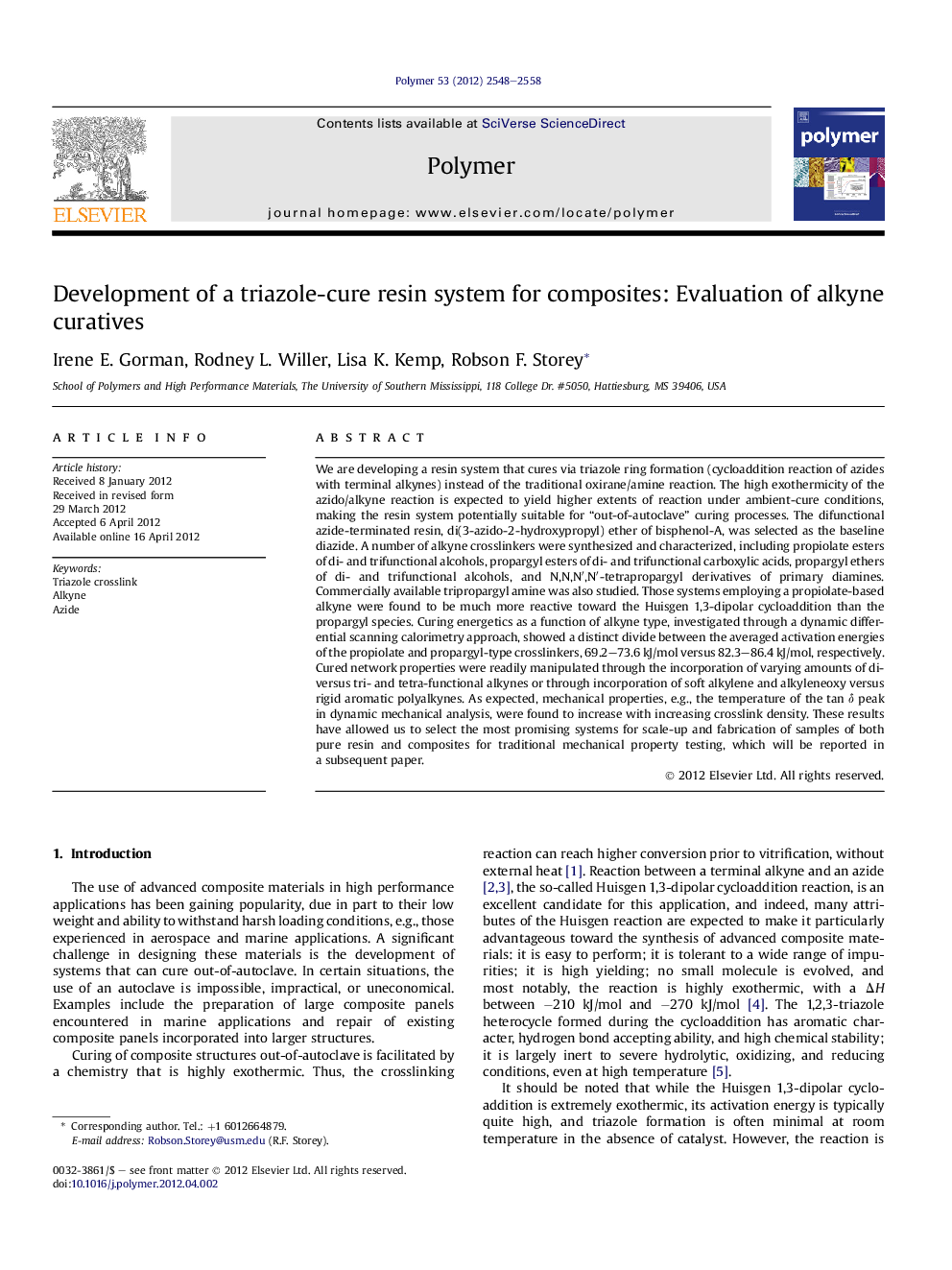| کد مقاله | کد نشریه | سال انتشار | مقاله انگلیسی | نسخه تمام متن |
|---|---|---|---|---|
| 5183583 | 1381023 | 2012 | 11 صفحه PDF | دانلود رایگان |

We are developing a resin system that cures via triazole ring formation (cycloaddition reaction of azides with terminal alkynes) instead of the traditional oxirane/amine reaction. The high exothermicity of the azido/alkyne reaction is expected to yield higher extents of reaction under ambient-cure conditions, making the resin system potentially suitable for “out-of-autoclave” curing processes. The difunctional azide-terminated resin, di(3-azido-2-hydroxypropyl) ether of bisphenol-A, was selected as the baseline diazide. A number of alkyne crosslinkers were synthesized and characterized, including propiolate esters of di- and trifunctional alcohols, propargyl esters of di- and trifunctional carboxylic acids, propargyl ethers of di- and trifunctional alcohols, and N,N,Nâ²,Nâ²-tetrapropargyl derivatives of primary diamines. Commercially available tripropargyl amine was also studied. Those systems employing a propiolate-based alkyne were found to be much more reactive toward the Huisgen 1,3-dipolar cycloaddition than the propargyl species. Curing energetics as a function of alkyne type, investigated through a dynamic differential scanning calorimetry approach, showed a distinct divide between the averaged activation energies of the propiolate and propargyl-type crosslinkers, 69.2-73.6 kJ/mol versus 82.3-86.4 kJ/mol, respectively. Cured network properties were readily manipulated through the incorporation of varying amounts of di- versus tri- and tetra-functional alkynes or through incorporation of soft alkylene and alkyleneoxy versus rigid aromatic polyalkynes. As expected, mechanical properties, e.g., the temperature of the tan δ peak in dynamic mechanical analysis, were found to increase with increasing crosslink density. These results have allowed us to select the most promising systems for scale-up and fabrication of samples of both pure resin and composites for traditional mechanical property testing, which will be reported in a subsequent paper.
Journal: Polymer - Volume 53, Issue 13, 7 June 2012, Pages 2548-2558